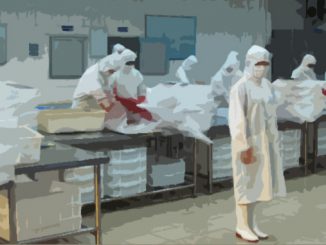

最近、米国で商業販売されている一部のトマトを食べてサルモネラ菌に感染するという食品由来の疾病のニュースがあった。このケースは、健康を司る省庁が十分な人的資源を有し、かつ予期せぬ出来事に備えているということがいかに大切かということを浮き彫りにした。ところが、通常は、そういった組織の人的資源というのは限られている。結果として、国民の健康を効率的に守るために優先順位をつけることが必要となる。時折、国民の危険に対する認識は、科学的評価と一致しないことがある。
The recent news of food borne illness attributed to Salmonella in certain tomatoes distributed commercially in the United States highlights how important it is for health ministries and agencies to have adequate resources and to be prepared for unexpected events. Usually, however, such organizations have limited resources. Consequently, setting priorities is essential for effective public health protection. Sometimes, the public’s perception of hazard does not coincide with scientific assessment.
とはいえ、民主主義社会においては、政府は世論を慎重に考慮しなければならない。2000年、米国食品医薬品局(FDA)は、任意の審査手順に対する国民のコメントに応え、全バイテク食品の市場流通前審査を義務付けることを提案した。その提案が通っていたとしたら、その審査手順は、義務化されたとしても現行の任意の手順と似たものであったことだろう。
しかし、FDAがその提案をまとめあげることはなかった。1つには、遺伝子工学の技術について評価すること、さらに当時開発途上にあったバイテク食品の特性について評価することは、同時に次のことを示唆していたからである。すなわち、バイテク食品の安全性評価に専念する一方で、ほかの活動、例えば、食品由来の疾病が起こりうる可能性を減少させることや、またそういった事態が起こった場合に迅速かつ効率的に対応できるようにしておくことなどに人的資源を十分配分する方が、国民の健康を保護する上でより大きな効果があるだろうということである。
FDAは、1992年のバイテク作物由来の食品に関する政策を策定するに当たって、いくつかの規制上の選択肢を用意した。1つの選択肢は、すべての新しいバイテク食品は、遺伝子が変化したということで、新しい食品添加物と位置付けるものである。それにはFDAによる市場導入前審査と認可が義務付けられている。この選択肢は却下された。なぜなら、バイテク食品および従来の植物育種についてFDAは科学文献の審査を広範囲にかつ綿密に行ったが、遺伝子工学に関連した特殊な危険因子は何ら認められなかったからである。
前回のこの欄でも述べたことだが、代わりにFDAは、開発企業に科学的データを任意にFDAに提供するよう促すことにした。さらに、安全性に関する問題が未解決のまま残っていた場合に限り、市場導入前審査を義務付ける同食品添加物規制部門を頼るよう勧めた。1990年代後半、欧州で開発されたバイテク食品に関して不安に思う米国民から多くの質問がFDAに寄せられた。そのため、1992年の政策を修正すべきかどうか検討した。
1999年、FDAはWashington,DC、 Illinois州Chicago、 California州Oakland (San Francisco近郊:写真参照)の3都市で食品バイオテクノロジー政策について説明するため、また市民の意見を聞くために市民集会を開催した。集会では、専門家によるパネルが2つに分かれていた。1つは、科学的問題について議論するパネル、もう1つは、情報公開や食品表示といった問題を議論するパネルである。
集会はまた、参加者の誰もがそれぞれの意見を表明する機会を設けていた。意見表明希望者多数のため(1集会について85人程いた)1人につき2分間と限られたが、集会参加者に限らずFDAは、書面にて意見を受け付けていた。バイテク食品に対するFDAの政策について、実にさまざまな意見が寄せられた。概して国民は、任意の協議プロセスを通して行うFDAの科学的審査に満足していた。しかし、多くの個人は、FDAはそのプロセスを義務化すべきであると感じていた。
FDAは、協議プロセスを義務化する規則を起草した。しかしながら、FDAはもっぱら世論に基づくだけでは規則を公布することはできない。従って、FDAはその提案において次のように断言した。遺伝子工学によるDNA配列の組み入れは、従来の植物育種から得られる結果に比べ予期せぬ影響を導きやすい、そしてそのような変異によって健康に予期せぬ影響が及ぶおそれがある。
その提案は、国民および業界の双方から幅広い支持を得た。しかし、1992年の政策とは異なり、その主張を裏付ける科学文献が欠けていた。加えて、あるバイテク食品についてFDAに届け出がなかった場合、その新規食品がGRAS(一般に安全と認められる)ではない、あるいは国民に危害を及ぼすであろうと立証できない限り、FDAは法的手段を取ることはできない。FDAに届け出がなかったバイテク食品が食料供給中にわずかに存在しているというだけでは、法的手段を取ることは難しいのである。
従来の植物育種に対して遺伝子工学による予期せぬ影響が特別に健康上の問題を引き起こすかどうかよりよく理解するため、FDA、農務省(USDA)そして環境保護庁(EPA)は、米国学術研究会議(NRC)と米国科学アカデミー附属医学研究所にその問題について研究するよう要請した。
委員会の結論は、すべての遺伝子変化のメソッドは予期せぬ影響を導く可能性があるが、化学的または放射線による突然変異誘発といった従来の一部の育種法のほうが遺伝子工学よりも予期せぬ影響が生じる可能性が高いというものであった。FDAが提案した協議プロセスを義務かするとい規則が決断されることはなかった。いくつかの政権、民主党、共和党が議会を支配したが、いずれもFDAの1992年の政策を改める理由を見出すことはなかった。
経験は今なお証明している。FDAによるバイテク食品の科学的審査は適切なものであり、審査を通った全バイテク食品は従来の食品と同程度に安全であると。ObamaはたまたMcCainによる新政権が食品バイオテクノロジーに対するFDAのアプローチを変えようと試みたとしても、その事実は変わらない。しかしながら、FDAは食品安全に対する権限の強化が、食品由来の疾病の予防やバイオテロ法または輸入食品検査強化法に見られるように、国民の健康を最大限に保護するために向けられることが好ましいと考えている。
業界が新規のバイテク食品の科学的調査を適切に行うこと、また引き続きFDAと協議することは重要である。もしバイテク食品が消費者の健康に悪影響を及ぼすことが分かったならば、FDAのバイテク食品政策は一夜にして変わるだろう。
*本稿で表記する「バイテク」は、遺伝子組換えを意味するものとする(FoodScience編集部)
Nevertheless, in democratic societies, governments must carefully consider public opinion. In 2000, FDA, responding to public comments about its voluntary review process, proposed to require review of all biotech foods prior to commercial distribution. The proposed process would be similar to the existing voluntary process but would be mandatory.
The agency did not finalize the proposal, in part, because its assessment of the science of genetic engineering and of the characteristics of biotech foods then under development suggested that, while some resources should be devoted to assessing biotech food safety, other activities, such as reducing the likelihood of food borne illness, and ensuring effective responses when such incidents occur would have a greater impact on protecting public health.
FDA considered several regulatory options when it developed its 1992 policy for foods derived from biotech crops. One option posited that all new biotech foods, by virtue of the genetic alteration, are new food additives that require premarket review and approval by FDA. That option was rejected because the extensive review of scientific literature that FDA conducted on biotech foods and conventional plant breeding did not reveal any unique hazards associated with the use of genetic engineering.
As discussed previously in this column, FDA instead chose to encourage developers to voluntarily provide scientific data to FDA and to rely on its food additive authority to require premarket review only in cases where questions of safety remain unresolved. Following the uncertainty regarding biotech foods that developed in Europe in the late 1990s and resulting questions that FDA received from the U.S. public, FDA considered whether it should modify its 1992 policy.
FDA conducted public meetings in 1999 in Washington, D.C., Chicago, IL, and Oakland, CA (near San Francisco; see photo), to explain its food biotechnology policy and to hear the views of the public. Each meeting had two panels of experts, one to discuss scientific issues and the second to discuss issues such as public information and food labeling.
Each meeting also provided an opportunity for individuals in the audience to express their views. Due to the large number of requests (about eighty-five individuals per meeting), speakers were limited to two minutes, but the speakers as well as the public generally were invited to submit written comments to FDA. Many diverse views were expressed regarding FDA’s policy for biotech foods. Generally, the public was comfortable with FDA’s scientific review conducted through the voluntary consultation process, but many individuals felt that FDA should make the process mandatory.
FDA drafted a regulation to mandate its consultation process. However, FDA cannot issue regulations based solely on public opinion. Consequently, FDA asserted in the proposal that the insertion of DNA sequences via genetic engineering was more likely to lead to unintended effects compared with modifications that result from conventional plant breeding and that such modifications could lead to unintended health effects.
The proposal received broad support from the public and the industry, but unlike the 1992 policy lacked scientific literature to support its thesis. In addition, if a biotech food was not notified to FDA, FDA could not take legal action, unless (as is the case under current law) the agency could demonstrated that the new food was not GRAS or that it could harm the public. The mere presence in the food supply of a biotech food that had not been notified to FDA would not be sufficient for legal action.
To better understand whether unintended effects pose a special health concern for genetic engineering versus conventional plant breeding, FDA, USDA, and EPA requested that the National Research Council and the Institute of Medicine of the U.S. National Academies of Sciences, study the issue.
The committee concluded that all methods of genetic alteration can lead to unintended effects and some methods of conventional breeding such as chemical and irradiation mutagenesis are more likely than genetic engineering to produce unintended effects. FDA’s proposed regulation has not been made final. Several Administrations and Democratic and Republican controlled sessions of the Congress have found no reason to alter FDA’s 1992 policy.
Experience continues to show that FDA’s scientific review of biotech foods is sound and that all such foods for which reviews have been completed are as safe as their conventional counterparts. It remains to be seen whether a new Obama or McCain Administration would seek to make changes in FDA’s approach to food biotechnology. However, it is likely that FDA would prefer that any enhancement of its food safety authority be directed toward achieving the greatest protection of public health: prevention of food borne illness or acts of bioterrorism and enhanced inspection of imported food products.
It is critical that industry continue to conduct adequate scientific investigations of new biotech foods and to continue to consult with the FDA. If a biotech food were found to adversely affect the health of consumers, the FDA’s policy for biotech foods could change overnight.
*FDA Public Meeting on Food Biotechnology, Oakland, California, December 13, 1999. Panel to the right: experts on scientific issues; Panel to the left: FDA staff. This author is seated to the far left.
※このコラムは「FoodScience」(日経BP社)で発表され、同サイト閉鎖後に筆者の了解を得て「FoodWatchJapan」で無償公開しているものです。



